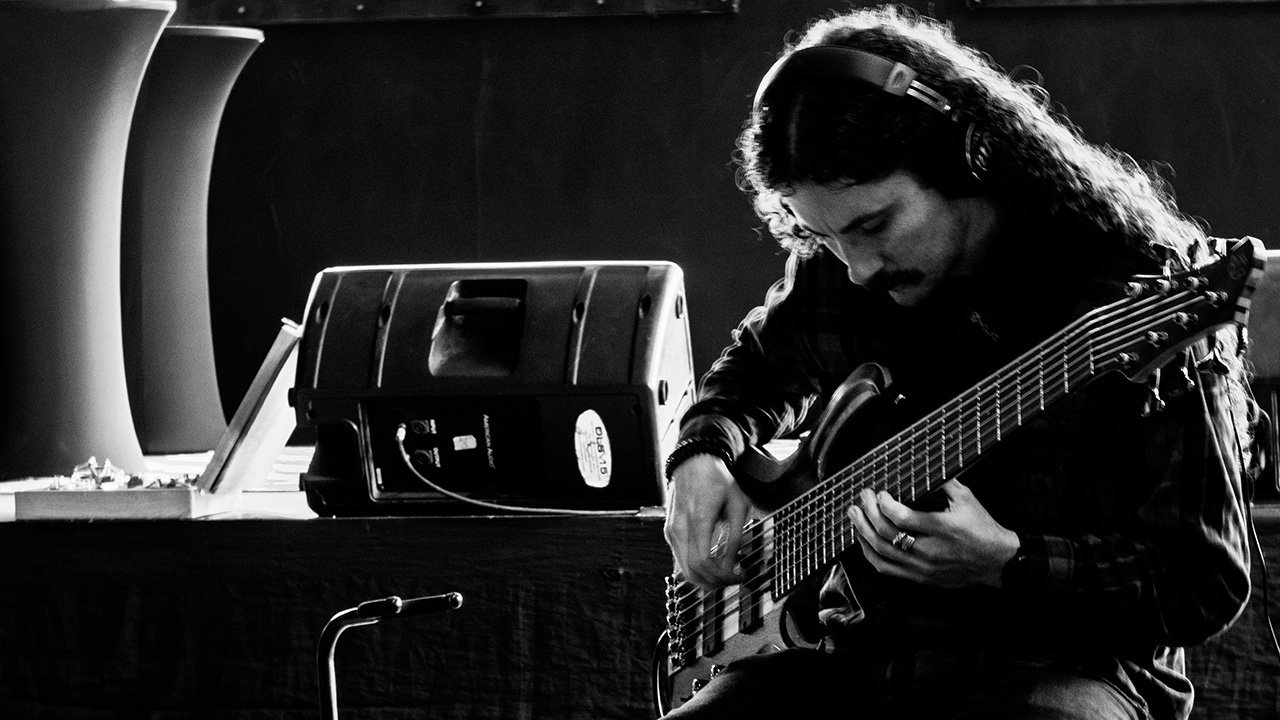“We grabbed a taxi home, but I left the bass in the trunk. I woke up in the middle of the night and started freaking out”: Viral bass hero Blu DeTiger just gave the Fender Jazz Bass a radical revamp – but she started on a Gretsch she left in a cab
We talk to the bassist with 1.4 million fans on TikTok about how DJing influenced her bass playing, and sending her new signature Jazz Bass to Flea

Blu DeTiger, bassist and social media star with 1.4 million fans on TikTok, recently announced her first ever signature bass in collaboration with Fender.
The Limited Player Plus x Blu DeTiger Jazz Bass boasts a chambered ash body, custom Blue DeTiger Fireball humbucker and Player Plus noiseless pickups, and a Sky Burst Sparkle finish.
“We went through a bunch of different shades of blue until we found something I really loved,” says DeTiger. “It also has a chrome pickguard, which was inspired by the Nile Rodgers Hitmaker Stratocaster.”
Bursting with talent, DeTiger has amassed millions of views on social media with thumping bass covers of hits by Prince and Megan Thee Stallion. Her 2024 debut album, All I Ever Want Is Everything, anchored unsurprisingly by her infectious basslines, has also secured her as one to watch.
“I wrote so many songs for that album. And then there was a time where I was like: ‘Alright, this is it, I’m committing, these are the songs, let’s go. I’m gonna be making music for my whole life. We gotta start somewhere.’ At one point, you just have to let go; otherwise, you’ll drive yourself crazy.”
Ahead of the release of her new signature bass, we spoke to DeTiger about her giant pedalboard, working with Fender, and her background as a DJ.
When did you start playing bass?
All the latest guitar news, interviews, lessons, reviews, deals and more, direct to your inbox!
“I started when I was seven. The bass guitar was taller than me! I don’t even know how I was doing it; I could barely hold it.”
What was your first bass?
“My first bass was a Gretsch, but it’s actually a really sad story. I was playing with a program called School of Rock, which is an after-school music programme where you take lessons and you play covers at a concert. The first one I did was a Rolling Stones concert, and then I think the show I did after that was AC/DC, so I got super-into both of those bands.

“I remember we had a show at this iconic venue in New York called CBGB. The adrenaline of being on that stage was incredible. We grabbed a taxi home, but I ended up leaving the bass in the trunk. I just forgot about it! I woke up in the middle of the night and started freaking out, but I never got it back.
“Next I got a Fender Mustang, and then a Fender P-Bass. I decided that I needed a Jazz Bass once I got into funk music. It’s just easier to slap on a Jazz Bass.”
When did a Fender signature model come into the picture?
“I’ve actually been working with Fender for a while now. They sent me a bass back when I was 17. I’ve also got a Jazz Bass from the Fender Custom Shop, which ended up being a very early prototype of my new signature model. That bass was a great jumping-off point.”
How much were you involved in the actual design and testing of the bass?
“There was lot of back and forth. I actually took the first prototype on tour and spent some time with it. We made some changes to the electronics and the pickups. We changed the bridge a few times, but we nailed it with the second prototype.”
Has it been an intimidating process?
“As soon as people started posting about it on social media it became pretty nerve-wracking! To have your own signature model is the ultimate goal as a player, but everyone will have their own opinion on the bass. I know it's going to be crazy, but I want to go to Guitar Center this week and just see what's up!”
What are the special features on the bass?
“It's a really unique bass. It has a chambered ash body, which makes it really light. The pickup configuration is also really interesting with the humbucker, which sounds like a built-in drive! It’s totally different from anything Fender's made in the past. We’re even sending one to Flea.”
Do you use any effects?
“I have a giant pedalboard, but I don’t actually like to use that many pedals. I guess I’m more of a purist! I have an envelope filter and a distortion pedal that I’ll use for some songs, but that’s probably it.”

Does your background as a DJ help as a bassist?
“I think it’s really influenced the way that I write basslines. When I first started DJing I would bring out my bass and shred over the different DJ sets. I was just like, ‘Oh, this is sick. I really like DJing and I love playing bass. Why not combine them?’
“It taught me how to train my ear, and I got a lot better at coming up with new basslines on the spot. People would go crazy. For some reason it just worked.”
- For more information on the Blu DeTiger Jazz Bass, head to Fender.com.

Nick Wells was the Editor of Bass Guitar magazine from 2009 to 2011, before making strides into the world of Artist Relations with Sheldon Dingwall and Dingwall Guitars. He's also the producer of bass-centric documentaries, Walking the Changes and Beneath the Bassline, as well as Production Manager and Artist Liaison for ScottsBassLessons. In his free time, you'll find him jumping around his bedroom to Kool & The Gang while hammering the life out of his P-Bass.


